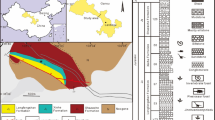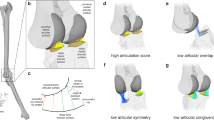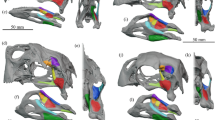Abstract
Attempts to quantitatively reconstruct the range of motion of sauropod necks are intrinsically flawed because of ubiquitous distortion in preserved cervical vertebrae. This is true even for specimens that are usually considered particularly well preserved, such as the Carnegie Diplodocus and the Berlin Giraffatitan.
Similar content being viewed by others
Article PDF
Author information
Authors and Affiliations
Corresponding author
Rights and permissions
About this article
Cite this article
Taylor, M. Range of motion in intervertebral joints: why we don’t trust DinoMorph. Nat Prec (2012). https://doi.org/10.1038/npre.2012.6878.1
Received:
Accepted:
Published:
DOI: https://doi.org/10.1038/npre.2012.6878.1



